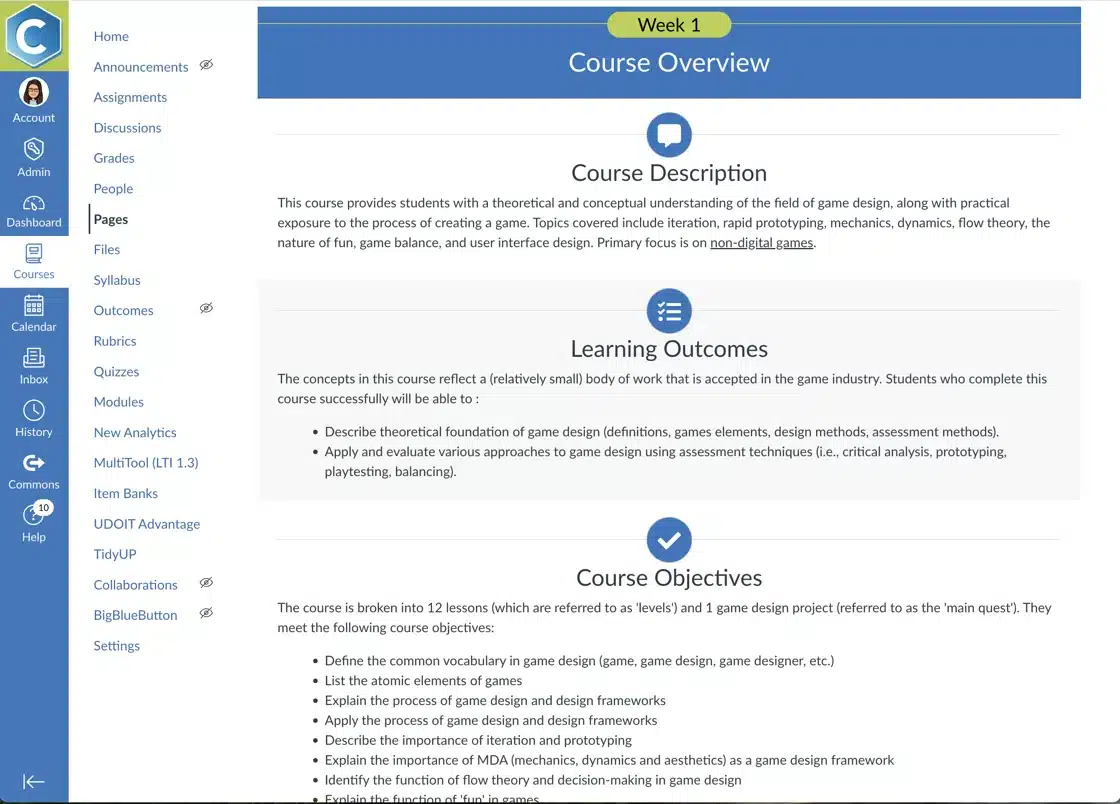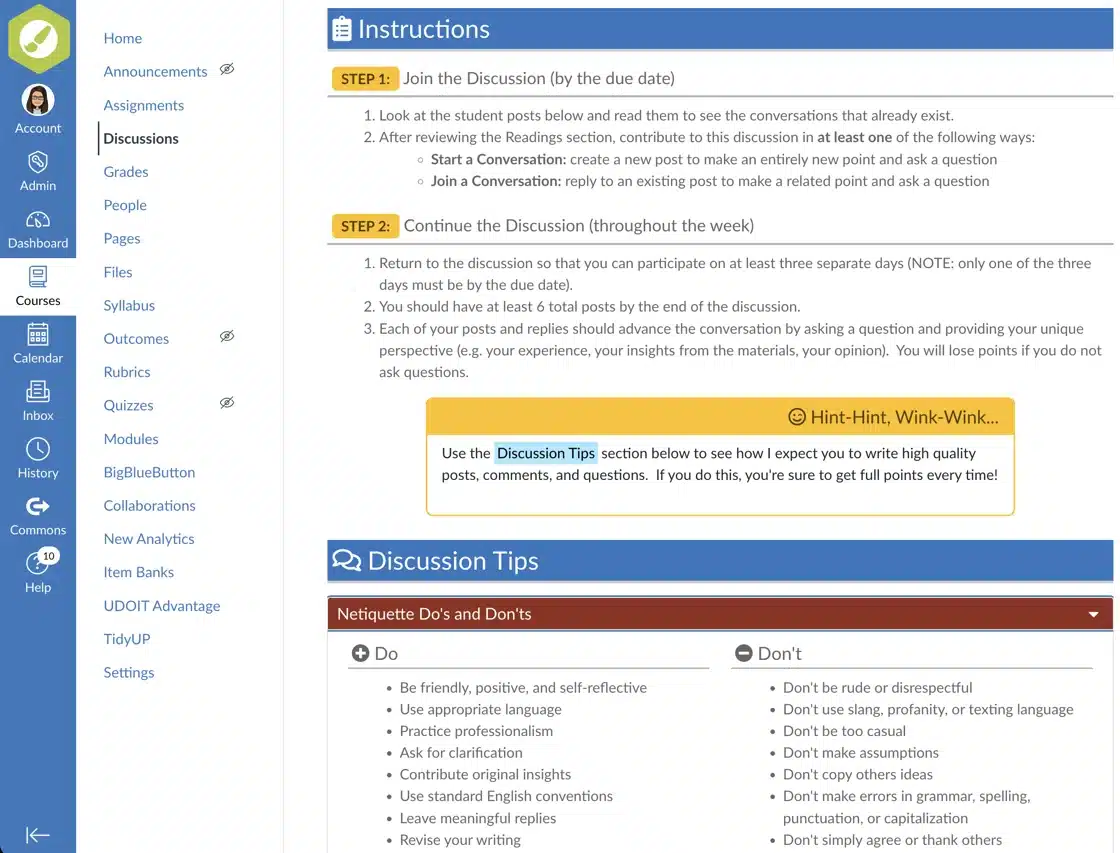Design Matters Digest: February Edition

What's the risk of poorly organized courses?
Welcome to the second edition of our new Design Matters Digest – a monthly newsletter in which we’ll explore various elements of online course design and share research along with actions you can take to improve your Canvas courses. This month, we’re taking a look at the importance of well-organized courses and the impact poor course organization can have on learners.
“Bad course organization, or at worst, lack of course organization and disconnected, illogical structures of the courses are linked with dropout decisions.”
Hammond, D. E., and Shoemaker, C. 2014
The research above is one of many pieces of evidence we’ve gathered to highlight the importance of course structure and organization. What may surprise some is that poorly organized courses can actually have a negative impact on learners and thus affect dropout rates.
Research has also shown that effectively designed online courses can increase student engagement, improve comprehension, and ultimately, elevate academic success (Joosten T., Cusatis R. 2019, Muljana, P. S. & Luo, T. 2019). By establishing a consistent and logical structure, you reduce the effort it takes for a learner to find and process content.
Now, let’s explore some practical ways to improve your course structure and organization.
Establish a consistent style and format.
Using colors and icons consistently throughout a course can help cue learners as to the type of interaction they can expect. Developing reusable content blocks and templates that can establish good organization across courses helps your students engage more easily due to the familiar patterns.

Group content in right-sized chunks.
Chunking content is a well-known strategy for reducing cognitive load for learners. Since 1956, George Miller of Harvard’s paper on short-term memory and the magic number of 7 items humans can process has redefined how we display content to learners. Breaking content into smaller chunks reduces learners’ required effort to understand the information they need (Miller, G. 1956). Using visual elements to display content in chunks will better support learners’ knowledge acquisition.

Think about your information hierarchy and priorities.
Start with the big ideas and gradually focus on the details. Ask yourself how different components relate to each other and use that information to determine how to structure the page. Heading levels, nested content, and column layouts can be used to scaffold the content of a page. Scaffolded course design can actually improve a learner’s cognitive awareness by emphasizing a logical flow of ideas (Ice et all, 2011).
“Poor course design/organization affects learner satisfaction, thus contributing to dropout decisions.”
Ice, P., Gibson, A. M., Boston, W., and Becher, D. 2011
For more inspiration and ideas for better ways to present content to your learners, check out our video Can Your Canvas Courses Do This? You can also visit our Showcase to see what’s possible with DesignPLUS, the must-have Canvas course design toolset from Cidi Labs.

You may also be interested in...
Join us Thursday, February 22nd for a free webinar with Bellevue College. Learn how Betsy and Raji leveraged DesignPLUS and TidyUP from Cidi Labs to create a Faculty Development Training Program in 5 months in Canvas! Learn which tools they love and why, plus the AhHa! moments from faculty about the program.

Stories of Heroism: DesignPLUS Superpowers in Action
Florida International University shared how using Cidi Labs tools has transformed their online courses and made them feel like they had superpowers.Do you know someone who would like to receive our Design Matters Digest? Tell them they can subscribe here.
Citations:
Hammond, D. E., and Shoemaker, C. (2014). Are there differences in academic and social integration of college of agriculture master’s students in campus based, online and mixed programs? NACTA J. 58, 180–188.
Joosten, T., & Cusatis, R. (2019). A cross-institutional study of instructional characteristics and student outcomes: Are quality indicators of online courses able to predict student success? Online Learning, 23(4), 354-378.
Muljana, P. S. & Luo, T. (2019). Factors contributing to student retention in online learning and recommended strategies for improvement: A systematic literature review. Journal of Information Technology Education: Research, 18, 19-57.
Miller, G. A. (1956). The magical number seven, plus or minus two: Some limits on our capacity for processing information. Psychological Review, 63(2), 81–97
Ice, P., Gibson, A. M., Boston, W., and Becher, D. (2011). An exploration of differences between community of inquiry indicators in low and high disenrollment online courses. J. Asynchron. Learn. Netw. 15, 44–69.


